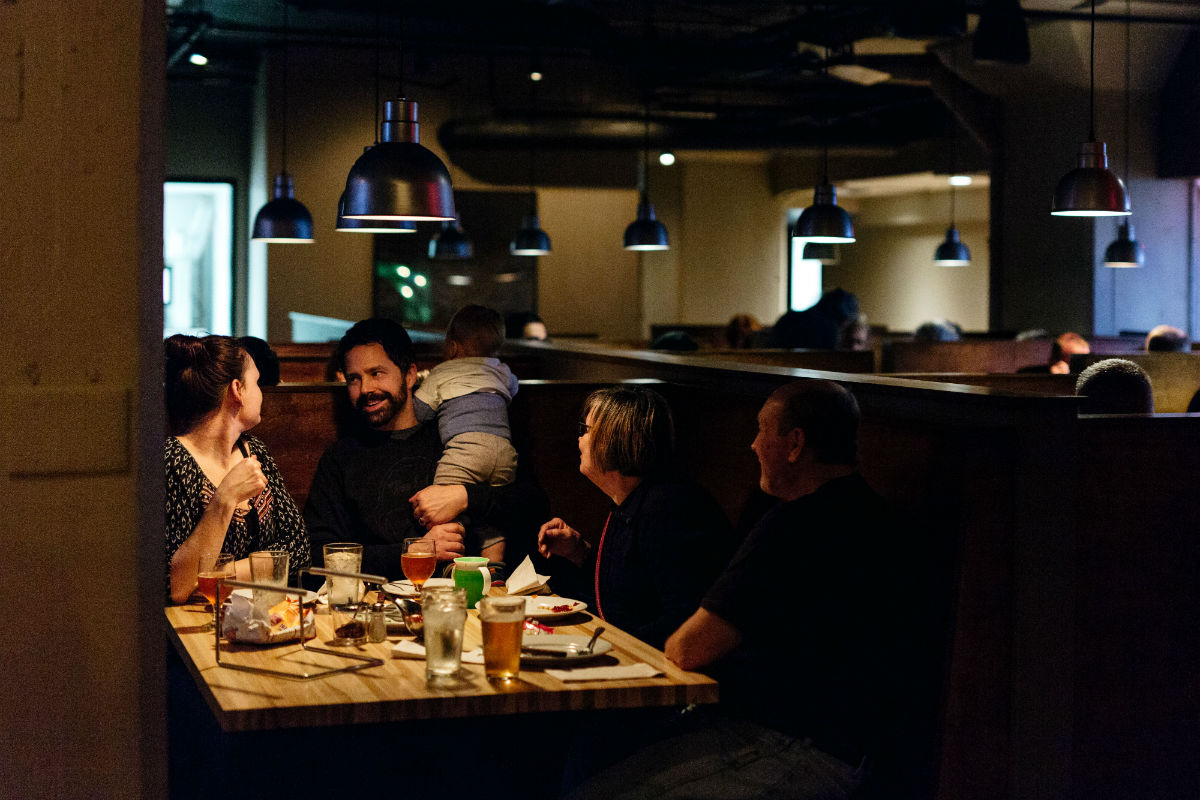At Shea, we pride ourselves on staying on top of what’s happening in design news. It helps us keep tabs on what’s fresh, inspiring, and happening in the world—and we make a few headlines of our own, too. Here are some recent articles delving into design, experience, and what’s buzzing in our community:
“The Restaurant Industry’s Recovery Swings Into Full Gear” – FSR:
In an article packed with helpful data and graphs, FSR takes a look at the recovering restaurant industry. With just over 10% of restaurants closing permanently between March 2020 and April 2021, the bleak outlook has turned around as the country begins to reopen post-COVID, with three consecutive months of restaurant sales stronger than in 2019. Off-premises sales growth is still historically high, and dine-in traffic is up. Dining in has spiked nationally and in major cities, and openings for new restaurants and food businesses are on the rise as well. With levels of people eating out up past pre-pandemic levels, it’s clear that diners are ready to get out there again, and restaurants need to be prepared to take advantage of the opportunity.
“Three Rules to Break in Retail Mixed-Use Design” – Urban Land Institute:
The Urban Land Institute explores the rules that are outdated in mixed-use retail design, and how they may change in the coming years. The first is the notion that “one size fits most” (designers need to do their research on the area demographics to help tenants provide the best customization and service to make a valuable customer connection). Second, the idea that the LEED rating is the end-all-be-all is going out of style, with design for more dimensional and more intentional well-being taking center stage. Finally, mixed-use isn’t necessarily about the “something for everyone” idea of live/work/play space anymore; creating blended-use spaces is in vogue as tenants and customers look to bring different areas of life into multiple spaces.
“Shea Named One of the Twin Cities’ Top Architecture Firms” – Shea:
The Business Journal’s annual Top Architecture Firms list, featuring Shea as one of the Twin Cities’ most successful.
“Creating the Perfect Workspace by Design” – Financial Review:
This Steelcase-sponsored piece suggests that best practices for office design going forward will be primarily focused on ways to attract and retain top talent in a competitive market, with hybrid workplaces, green areas, destination workplaces, wellness areas, and more. The idea is that these alternative spaces are what will lure workers back to the office. A solid integration of physical and digital, as well as spaces flexible enough to transform at the drop of a hat, is key, but it needs to be carefully personalized and adapted to each client and company, particularly to allow for unexpected interactions between employees. The idea of the “workplace” has shifted to include the office, the home, other remote locations, and the non-physical environment created by technology—which works to link the first three spaces.
“Upended by the Pandemic, Haute Chefs Move Into Hotels” – New York Times:
With 2020 having displaced many top chefs from their restaurants, some have decamped to tourist destinations that haven’t been previously known for great food. Former three-Michelin-star chefs have headed to inns and resorts in Ojai, Los Cabos, and hotels in other parts of the country to explore new markets, make up lost revenue, and reinvent themselves. While some have moved for good, others set up residencies to bring some additional attention to both the hotel and their cuisine. This piece looks at a handful of well-known chefs and how they’ve weathered the pandemic by setting up shop and creating food destinations.
“Time After Time” – VMSD:
In this examination of the latest retail fixtures, VMSD notes that retail design needs to remain timeless—and that often means looking to the past to create a look that stays relevant no matter the trends in the rapidly changing market. Looking at stores around the world for examples, the story notes that incorporating indigenous design touches or ones rooted in an area’s history is one way to create a timeless look by celebrating ties to the past. On the other end of the spectrum, a futuristic retail look gives the impression of being on the cutting edge and eschewing current trends.
“Specifying Outdoor Furnishings” – Restaurant Development + Design:
With the emphasis on outdoor spaces sure to be a sticking point post-pandemic, Restaurant Development + Design looks at the important features to include as restaurateurs look to invest money in those areas. Quality outdoor furniture that’s in keeping with a restaurant’s brand and aesthetic is key to success, and must be selected to withstand the elements in any environment. The spec focus should be on durability, and designers need to also take flexibility into account. Clients are looking for outdoor spaces that can transform from private-event areas to lounge to dining space, and the ambience (often an extension of the indoor design) needs to be on point. The piece also looks at purchasing considerations, including weight, material preference, ease of configuration, cleaning and maintenance, and more.
“The Essential Design Attributes of Workplace Terraces” – Work Design:
Outdoor spaces aren’t just important in restaurants—although Shea has been creating spectacular workplace terraces for years, they’ve really taken hold as office towers work to bring employees back to the workplace. Work Design examines the design necessities in outdoor areas—now with the additional aspect of incorporating areas for people to get real work and meetings done, as well as being used for social spaces and collaboration. Protection from the elements is important for both comfort and productivity, by way of greenery, shades, and wind-blocks, and a nice view is a big bonus for workers. Creating a green space as an oasis in the middle of urbanity also serves to boost attitudes and mental health.
“Changing the Game for Office and Retail” – Architect:
This story looks at a report from the Brookings Institution dissecting where the real-estate market goes from here, as multistory office buildings and brick-and-mortar retail spaces struggle to refill themselves. The report suggests that five major trends are coming together to change what’s happening in real estate: segregation by race and income, the country’s demographic transformation, weakened regional housing markets, the future of work, and interruptions in the retail ecosystem—the final two having been most impacted by the recent pandemic, creating a need for architects and designers to help shift the landscape. Developers are looking to put their dollars towards the future, and that means designing for the exciting retail experiences people are looking for—taking what works in digital and online shopping and bringing it to the customer. Design thinking is also headed overall in a more diverse direction in terms of equity and progressiveness.
“Making a Comeback: A Resource Guide to Downtown Minneapolis and North Loop Restaurants” – Shea:
Shea makes supporting local restaurants in the age of the reopen easy with a roundup of downtown and North Loop restaurant clients that have recently reopened or expanded their dining options and hours.
June 18, 2021
Shea Links: June

